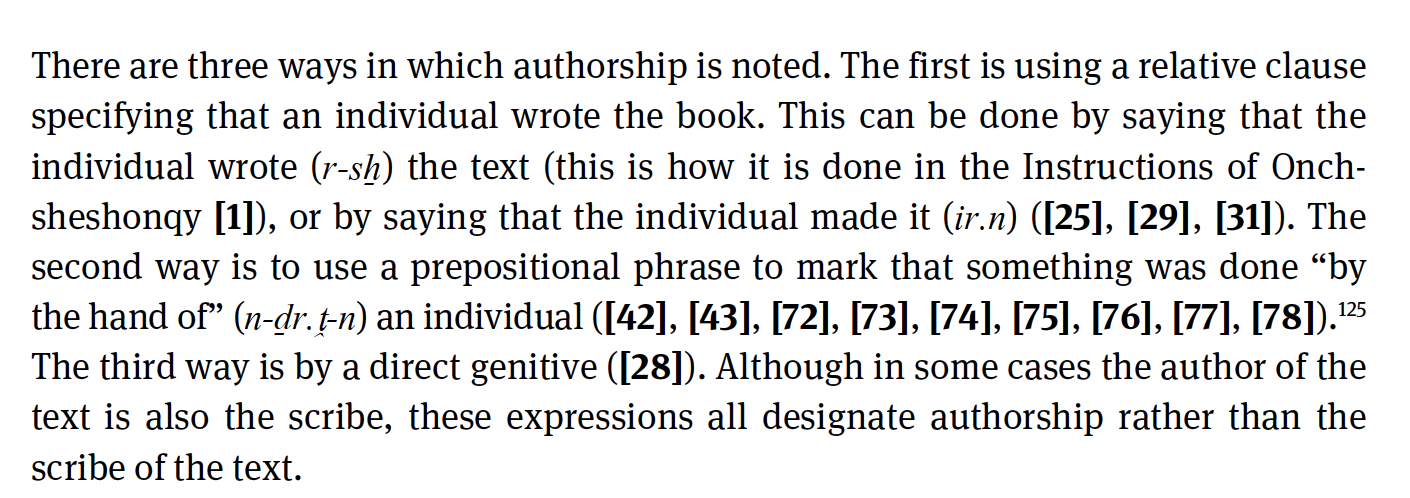John Gee examines literary titles in ancient Egypt; shows that "by/of the hand" was an idiom used in literary titles in ancient Egyptian texts to denote authorship.
- Type
- Academic / Technical Report
- Source
- John Gee LDS
- Hearsay
- DirectSecondary
- Reference
John Gee, “Literary Titles in Greco-Roman Egypt,” in Marc Brose et al., eds., En détail – Philologie und Archäologie im Diskurs: Festschrift für Hans-W. Fischer-Elfert (Berlin: de Gruyter, 2019), 344
- Scribe/Publisher
- De Gruyter Press
- People
- John Gee
- Audience
- Reading Public
- Transcription
There are three ways in which authorship is noted. The first is using a relative clause specifying that an individual wrote the book. This can be done by saying that the individual wrote (r-sḫ) the text (this is how it is done in the Instructions of Onchsheshonqy [1]), or by saying that the individual made it (ir.n) ([25], [29], [31]). The second way is to use a prepositional phrase to mark that something was done “by the hand of” (n-ḏr.ṱ.n) an individual ([42], [43], [72], [73], [74], [75], [76], [77], [78]). The third way is by a direct genitive ([28]). Although in some cases the author of the text is also the scribe, these expressions all designate authorship rather than the scribe of the text.
- Citations in Mormonr Qnas
The B. H. Roberts Foundation is not owned by, operated by, or affiliated with the Church of Jesus Christ of Latter-day Saints.

